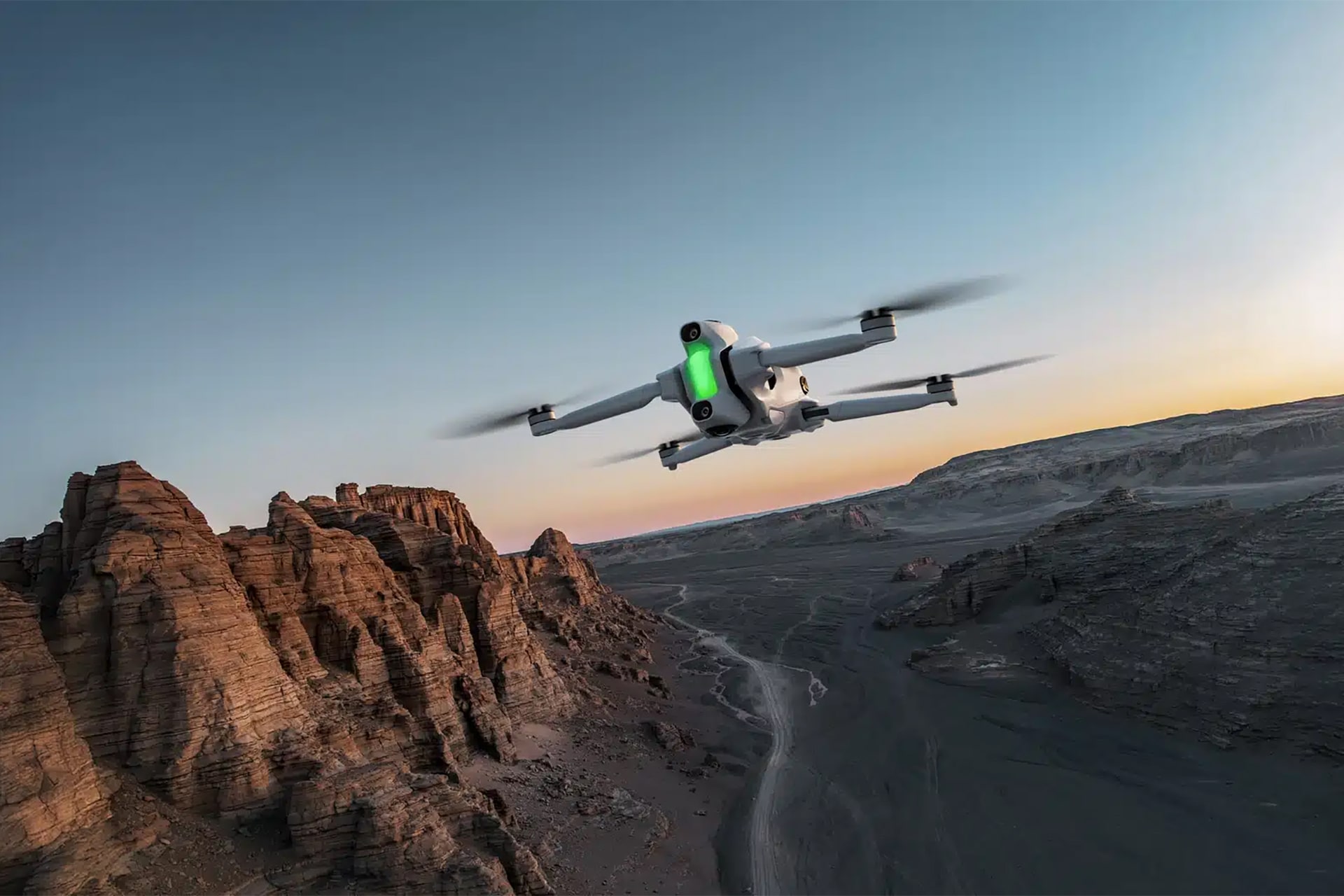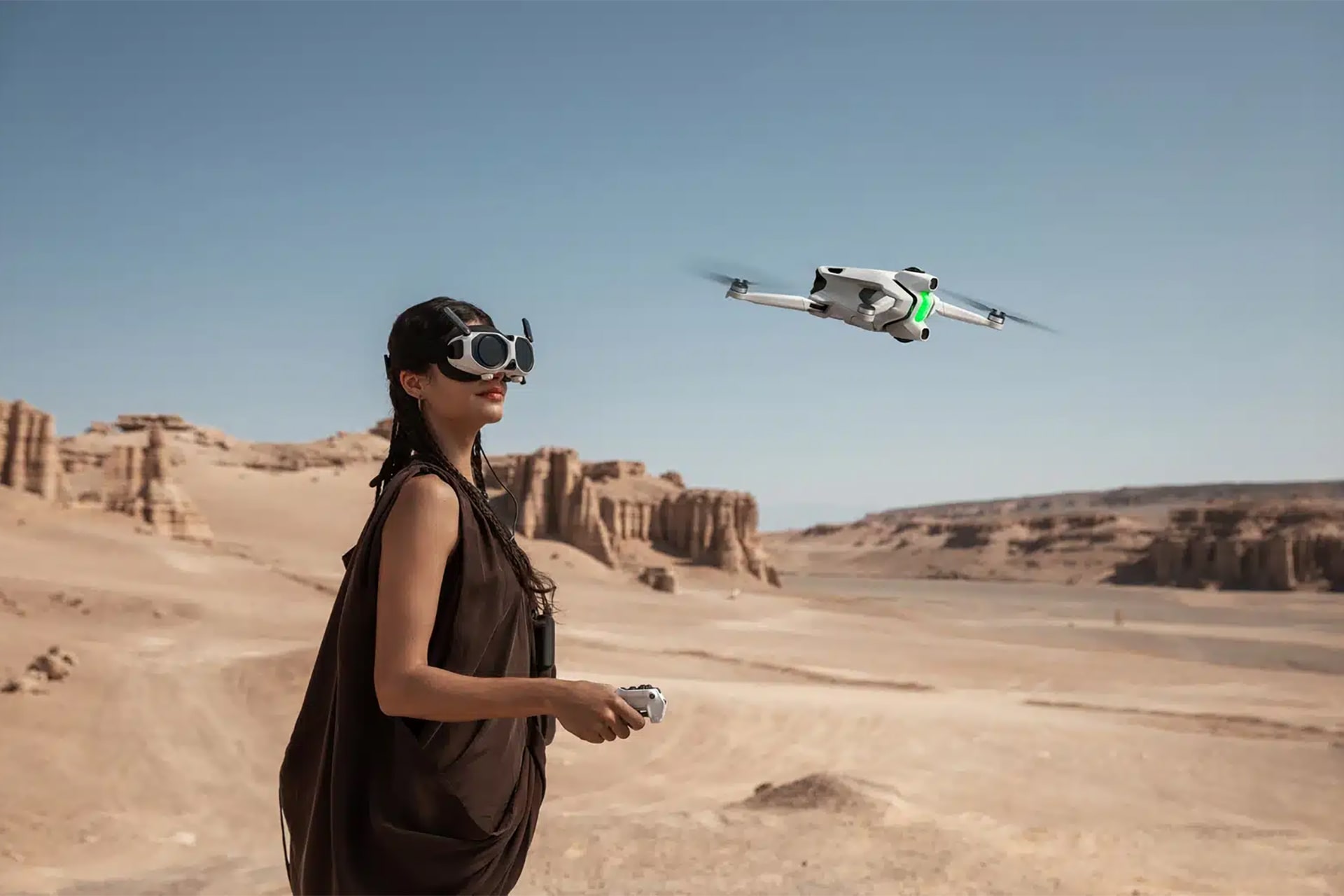On July 31, DJI officially unveiled its first panoramic camera, the Osmo 360, drawing widespread industry attention.
Facing DJI’s incursion, Insta360, a long-time specialist in panoramic cameras, quickly revealed new progress on its own drone project.
The world’s top consumer drone maker and the global leader in panoramic cameras are moving into each other’s markets, and both come from the same city: Shenzhen.
What follows is competition between two world-class players.
A “Shenzhen derby” begins
The rivalry between DJI and Insta360 kicked off in late July. On July 23, Insta360 made a high-profile announcement that it would enter the drone market, launching a new brand called Antigravity.

Just one day later, DJI issued a notice declaring its entry into the panoramic camera market. A week later, DJI released the Osmo 360.
In response, Insta360 quickly followed with further details on Antigravity, confirming public beta testing for August and signaling a potential commercial release in 2025.
This crossover is not coincidental. DJI controls more than 70% of the global consumer drone market and up to 85% in North America and Europe. In 2024, it recorded revenues exceeding RMB 80 billion (USD 11.2 billion).
Insta360, meanwhile, holds 81% of the global panoramic camera market. It went public on Shanghai’s STAR Market in June, reaching a valuation of over RMB 60 billion (USD 8.4 billion).
Cross-industry expansion is nothing new
Though the rivalry seems sudden, both companies have been expanding beyond their original focus for years.
DJI acquired Swedish camera maker Hasselblad in 2015 and has launched a string of professional cinema cameras since 2021.
Insta360 diversified in 2015 by entering the traditional action camera market with its Go 3 and Ace Pro series. Its growth came largely at the expense of GoPro, whose revenue and net profit have already fallen behind Insta360’s.
For Insta360, panoramic cameras have nearly hit a ceiling. With 81% global market share, growth opportunities are limited, making drones an attractive next step.
Market research firm IMARC estimates that the global consumer drone market was worth USD 5.2 billion in 2024 and could reach USD 13.9 billion by 2033, growing at a compound annual rate of over 10.3%. Even with DJI’s dominant market share, the room for growth leaves space for newcomers like Insta360.
DJI, too, is pursuing diversification. On the eve of the Osmo 360’s launch, the company introduced its first Romo robotic vacuum series. The panoramic camera market is equally attractive, with applications in outdoor sports and mixed reality promising strong demand.
Competing strategies
Insta360 is taking a steady, methodical approach. Its Antigravity drone will leverage the company’s strengths in panoramic imaging, integrating 8K resolution, six-axis gyroscope stabilization with FlowState technology, and compatibility with Insta360 Studio, an artificial intelligence-powered editing platform.
Weighing less than 250 grams, the drone is portable and compliant with regulatory requirements in major markets. In the European Union, drones under 250 grams don’t require a professional license, while in the US, they are exempt from certain registration rules. China, the UK, and Japan have similar frameworks.

DJI’s strategy leans on tech stacking. With more than a decade of expertise in optics and imaging, DJI can apply its proprietary algorithms, stabilization systems, and supply chain efficiencies to produce high-performance panoramic cameras at lower prices. The Osmo 360 delivers 8K video, electronic and horizon lock stabilization, and retails for under RMB 3,000 (USD 420).
A rivalry rooted in Shenzhen’s ecosystem
Neither company is likely to displace the other in its core specialization. Instead, their competition is expected to evolve into coexistence, with each capturing incremental market share.
Insta360 founder Liu Jingkang summed it up on social media by highlighting growth potential as motivation behind entering the drone business. He emphasized that he maintains great respect for DJI’s success in the space.
This “Shenzhen derby” is deeply shaped by the city’s innovation ecosystem. Both companies benefited from the PKU-HKUST Shenzhen Hong Kong Institution and the “Shenzhen Peacock” program, which supports startups with incubation resources and talent.
Insta360’s headquarters in Bao’an benefits from access to events like the Bao’an Marathon, which served as testing environments. Insta360 validated its AI-driven editing tools through the event.
DJI, meanwhile, has been boosted by Shenzhen’s ambition to lead the global drone market, enjoying tax incentives, government support at events like the 2016 Lunar New Year Gala, and infrastructure such as 483 drone takeoff and landing points completed in 2024.
Supply chain support has also been critical. DJI sources lenses from partners like O-Film, while Insta360 is preparing to adopt 16K camera modules from the same company. Sunwoda Electronic and Senior Technology Material provide batteries and casings. Their broader networks include Foxconn, Pugongying Intelligent Technology (PGYTECH), and MediaTek’s Shenzhen branch.
Shenzhen’s electronics industry alone generated RMB 2.7 trillion (USD 378 billion) in 2024, hosting more than 4,100 major enterprises and nearly 30 industry leaders. In Bao’an alone, RMB 24.36 billion (USD 3.4 billion) was added in smart terminal output, with companies like Everwin Precision Technology and Unilumin.
With such an ecosystem, it is no surprise that DJI and Insta360 are bold enough to cross boundaries. Their rivalry not only reshapes their industries but also underscores Shenzhen’s role as one of the world’s most vibrant innovation hubs.
Future battles of this scale are likely to start here.
This article was adapted based on a feature originally written by Zhengjie Club (WeChat ID: zhengjieclub). KrASIA is authorized to translate, adapt, and publish its contents.

